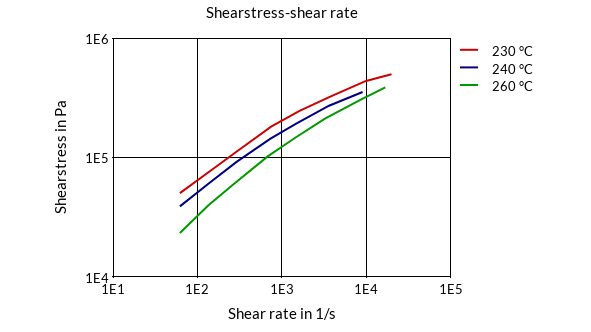Enhanced TDS
Knowde-enriched technical product data sheet
Identification & Functionality
- Chemical Family
- Polymer Name
- Plastics & Elastomers Functions
- Technologies
- Product Families
Features & Benefits
- Labeling Claims
- Materials Features
Applications & Uses
- Markets
- Applications
- Plastics & Elastomers End Uses
- Plastics & Elastomers Processing Methods
- House Wrap Application Data
Details
The roofing membrane uses the EM400+UV MB and EM402-L, whereas the house wrap uses PL381 and PM381.
Benefits
- Arnitel® offers intrinsic breathability at the same level of TPU
- Arnitel® allows for the possibility to run at lower film thickness and at higher extrusion speed versus TPU, which allows for a lower cost system
- Arnitel® has a commercial track record for over 20 years
- Breathable Films For Food Packaging Application Data
Details
Akulon® PA6 used in barrier films for food packaging.Benefits
Arnitel® TPC allows for reliable solutions, since it yields a breathable film that balances the application-specific gas mixture of O2 and CO₂, and the moisture inside the package- Mandrels as Supportive Tool Application Data
Details
Peroxide resistant Arnitel® mandrels for rubber and elastomer hose manufacturingBenefits
- Arnitel® (TPE) offers in extrusion lower torque and better stability measured in tolerances
- Easier to extract the mandrels from the tubes than alternative materials
- Cost reduction compared by increasing the number of re-use cycles (raw material and waste saving)
- Infusion Membrane Bags Application Data
Details
The Arnitel® based films are used as the outside layer of the composite production structure (boats, aeronautics) referred to as vacuum bagging film or infusion membrane.Benefits
- Arnitel® TPC allow for reliable solutions due its excellent balance of properties including chemical resistance, flexibility and resistance to degradation during curing
- Arnitel® TPC allow for cost effective solutions due its ease of processing and
- Industrial Cords and Ropes Application Data
Details
Arnitel® offers the perfect anti-corrosion solution for steel cables used in off-shore industry, like drilling rigs and larger sea vessels. Arnitel® protects the steel from damage due to metal to metal contact and wear, leading to a much longer lifetime.
Benefits
- Arnitel® has a proven track record in off shore cables
- Arnitel® material is suitable for most extrusion techniques
- Arnitel® offers excellent colorability
Properties
- Mechanical Properties
Value Units Test Method / Conditions Charpy Notched Impact Strength (at +23°C) N kJ/m² ISO 179/1eA Charpy Notched Impact Strength (at -30°C) N kJ/m² ISO 179/1eA Izod Notched Impact Strength (at +23°C) N kJ/m² ISO 180/1A Izod Notched Impact Strength (at -30°C) N kJ/m² ISO 180/1A - Thermal Properties
Value Units Test Method / Conditions Melting Temperature (10°C/min) 212 °C ISO 11357-1/-3 Vicat Softening Temperature (50°C/h 10N) 127 °C ISO 306 Vicat Softening Temperature (50°C/h 50N) 120 °C ISO 306 Coefficient of Linear Thermal Expansion (parallel) 1.5 E-4/°C ISO 11359-1/-2 Coefficient of Linear Thermal Expansion (normal) 1.5 E-4/°C ISO 11359-1/-2 - Electrical Properties
Value Units Test Method / Conditions Relative Permittivity (100Hz) 4.7 - IEC 62631-2-1 Relative Permittivity (1 MHz) 4.4 - IEC 62631-2-1 Dissipation Factor (100 Hz) 310 E-4 IEC 62631-2-1 Dissipation Factor (1 MHz) 810 E-4 IEC 62631-2-1 Volume Resistivity 1E12 Ohm*m IEC 62631-3-1 Electric Strength 20 kV/mm IEC 60243-1 Comparative Tracking Index 600 V IEC 60112 - Other Properties
Value Units Test Method / Conditions Water Absorption 7 % Sim. to ISO 62 Humidity Absorption 0.4 % Sim. to ISO 62 Density 1160 kg/m³ ISO 1183 - Mechanical Properties (TPE)
Value Units Test Method / Conditions Tensile Modulus 42 MPa ISO 527-1/-2 Stress at 5% strain 2.2 MPa ISO 527-1/-2 Stress at 10% strain 4 MPa ISO 527-1/-2 Stress at 50% strain 8.3 MPa ISO 527-1/-2 Stress at 100% strain 10.9 MPa ISO 527-1/-2 Stress at Break 12.5 MPa ISO 527-1/-2 Nominal Strain at Break 155 % ISO 527-1/-2 Tear Strength 52 kN/m ISO 34-1; Method B Shore D Hardness (3s) 32 - ISO 868 - Rheological Properties
Value Units Test Method / Conditions Melt Volume-Flow Rate (at 230 / * °C, 2.16 / * kg) 4.7 cm³/10min ISO 1133
Regulatory & Compliance
- Certifications & Compliance
Technical Details & Test Data
- Chemical Resistance
Chemical Type Chemical Name Resistance Other Acetic acid (10% by mass) at 23°C resistant Ketones Acetone at 23°C resistant Other Ammonium hydroxide (10% by mass) at 23°C limited resistant, tests necessary to verify Other ASTM 1 at 23°C resistant Other ASTM 3 at 23°C resistant Other Brake fluids (DOT 3/4) at 23°C not resistant Other Calcium chloride (10% by mass) at 23°C limited resistant, tests necessary to verify Other Chloroform at 23°C not resistant Ethers Diethyl ether at 23°C limited resistant, tests necessary to verify Alcohols Ethanol at 23°C limited resistant, tests necessary to verify Other Ethyl Acetate at 23°C limited resistant, tests necessary to verify Other Fuel; Diesel at 85°C resistant Other Hydrochloric acid (10% by mass) at 23°C resistant Other Hydrogen peroxide (30% by mass) at 23°C limited resistant, tests necessary to verify Other Nitric acid (10% by mass) at 23°C resistant Other Phosphoric acid (10% by mass) at 23°C resistant Other Sodium hydroxide (10% by mass) at 23°C resistant Other Sulfuric acid (30% by mass) at 23°C resistant Other Tetrachloroethylene at 23°C limited resistant, tests necessary to verify Hydrocarbons Toluene at 23°C resistant Other Transformer oil at 23°C not resistant Other Trichloroethylene at 23°C not resistant Other Water at 23°C resistant Other Zinc chloride (10% by mass) at 23°C resistant - Shearstress-Shear Rate

- Viscosity-Shear Rate

Packaging & Availability
- Packaging Type